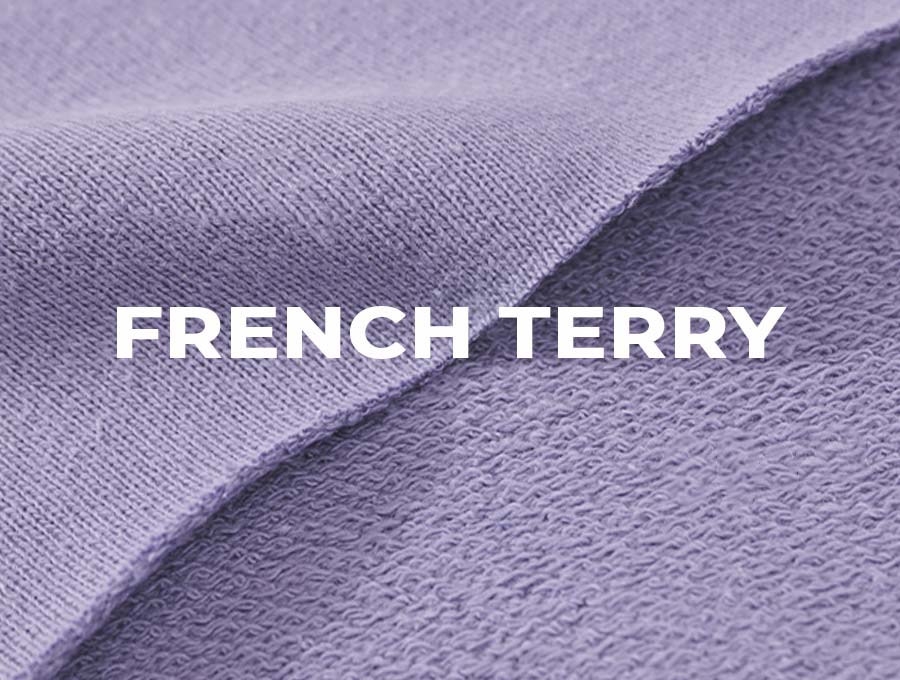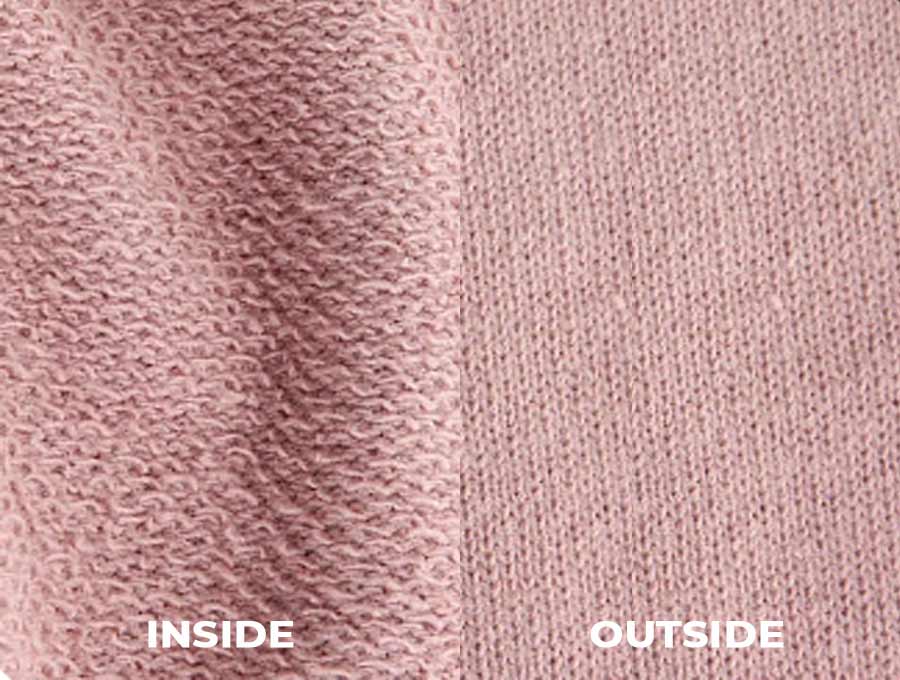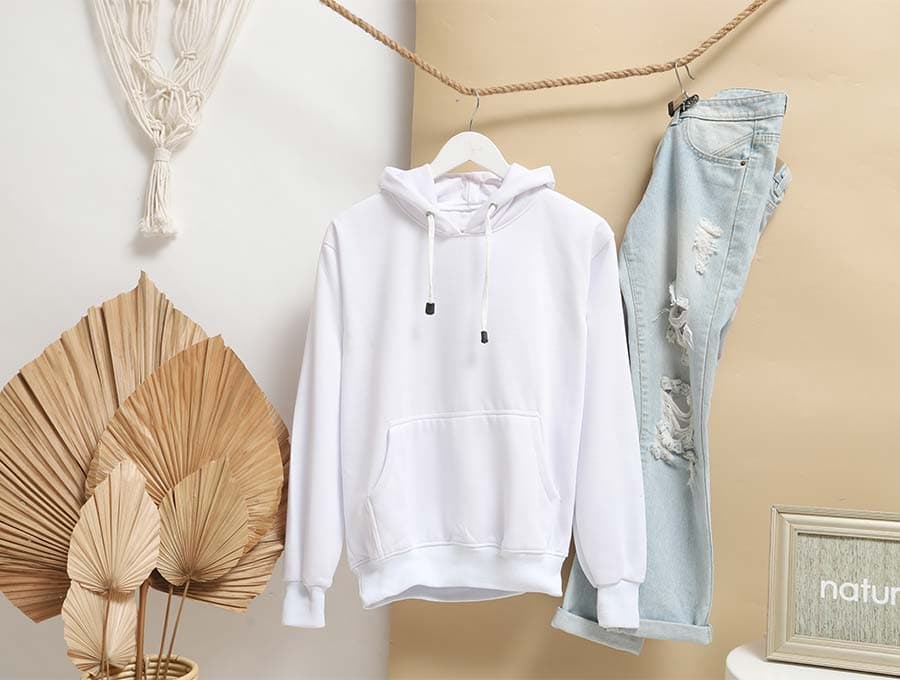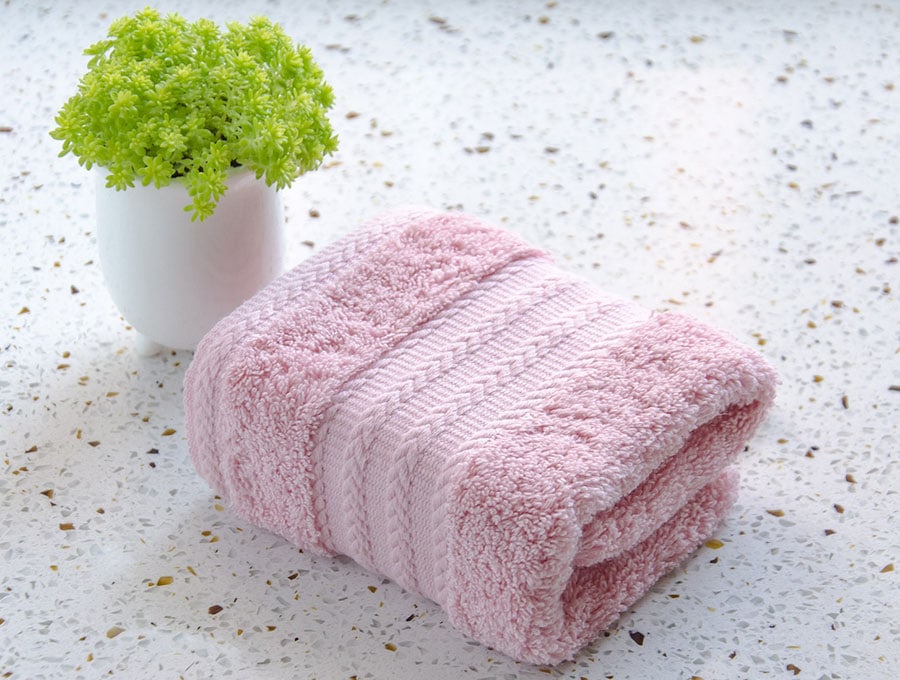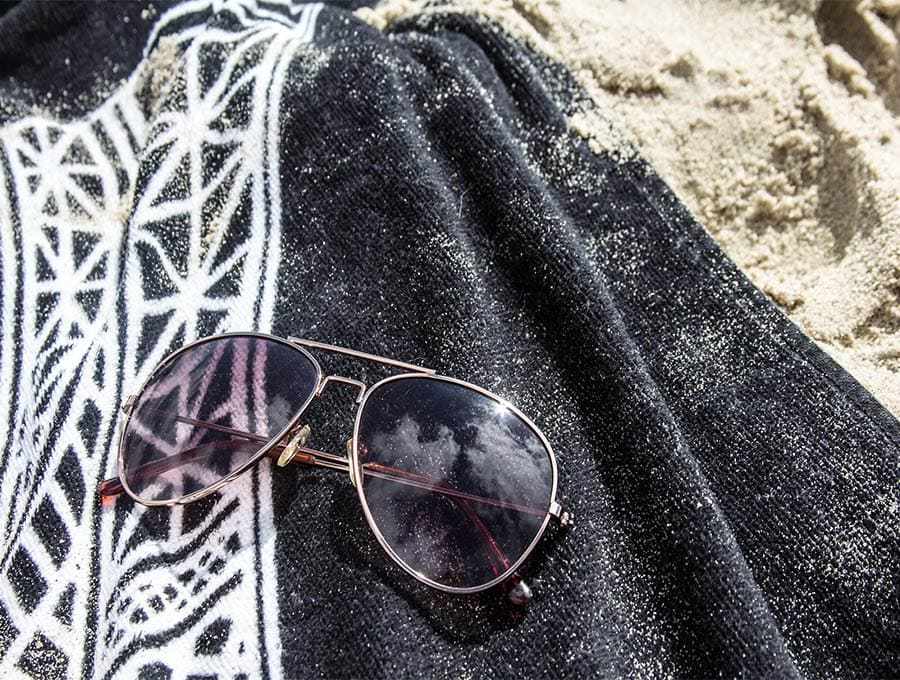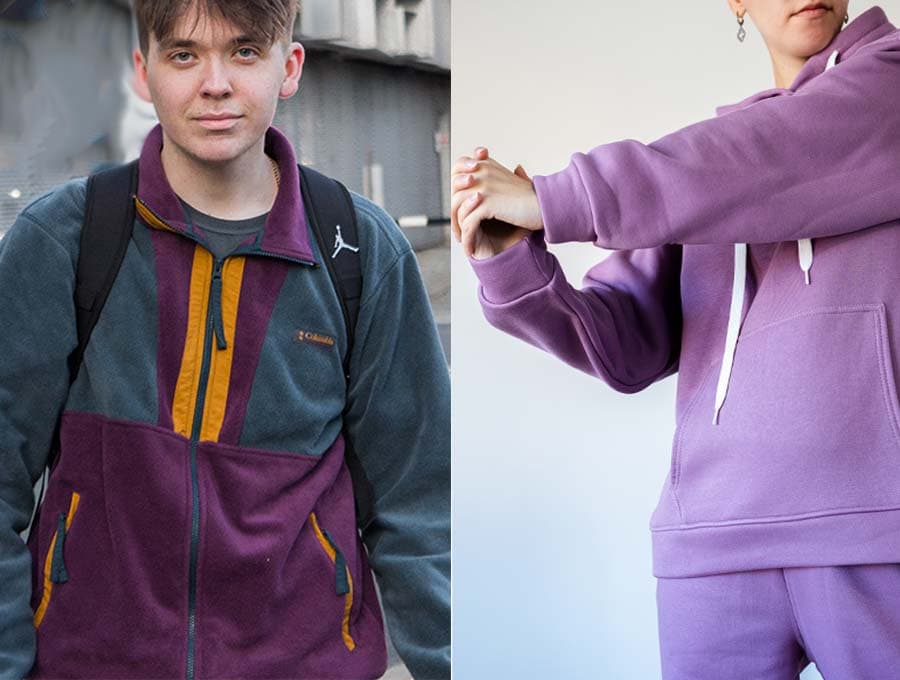French Terry 101: Everything You Need to Know About This Comfy Fabric
French Terry is a type of knit fabric that is commonly used in the fashion industry. It is known for its soft texture and comfortable feel, making it a popular choice for casual wear. The fabric is made from cotton and is typically used to create sweatshirts, hoodies, and other similar garments.
One of the unique features of French Terry is its looped back construction. This means that the back of the fabric has a soft, fuzzy texture that is perfect for keeping you warm on chilly days. The loops also help to absorb moisture, making it a great choice for activewear and workout clothes.
French Terry is a versatile fabric that can be used in a variety of ways. Whether you’re looking for a cozy sweatshirt or a comfortable pair of pants, this fabric is sure to provide the comfort and style that you’re looking for. Read on to learn what is French terry, what you can sew with it, how to care about it and more.
Table of Contents
What is French Terry?
French Terry is a popular knit fabric that is widely used in the fashion industry. It is a type of terry cloth that is known for its soft piles and looped texture as it is made by interconnecting loops of yarns, which gives it a unique texture and reduces fraying. It is stretchy, making it a popular choice for activewear and loungewear.
French terry can be made using various materials, including cotton, polyester, spandex, and Lycra. The most commonly used material for French Terry is cotton due to its softness and flexibility.
The loops on the back of French Terry fabric make it softer than other mid-weight woven fabrics. The loops also make it thicker and more durable than jersey terry cloth.
French Terry fabric is easy to care for and can be machine washed with low heat. However, it is important to avoid high heat and fabric softeners, as they can damage the loops and cause piling. It is also recommended to avoid tumble drying and line dry it instead.
What is French Terry Used For?
French Terry is a versatile fabric that can be used for a variety of clothing items. Its absorbent and breathable properties make it an ideal choice for comfortable and cozy loungewear, such as hoodies, sweatshirts, and sweatpants.
This fabric is also great for shorts and joggers, especially during the summer months when breathability is key. Its moisture-wicking capabilities make it a popular choice for workout clothes as well.
French Terry is often made with a blend of polyester and spandex or Lycra, which gives it a natural stretch that makes it perfect for casual clothing. The soft loops on the inside of the fabric create a cozy feel, while the smooth surface on the outside gives it a stylish look.
This midweight fabric is also a popular choice for winter clothing, such as fleece-lined jackets and robes. Its low-maintenance nature makes it easy to care for, and it dries quickly.
Some variations of French Terry include organic soy and velour, which add extra softness to the fabric. Its versatility and comfort make it a staple in many wardrobes, and it’s a popular choice for both men’s and women’s clothing.
How to Sew With French Terry
French terry is a knit fabric and sewing with it can be challenging if you are not familiar with the fabric’s unique properties. It is soft, stretchy, doesn’t fray or curl much but is a nightmare to rip if you make a mistake. Here’s my best tips for sewing with French terry to help you achieve professional-looking results.
Tips for Sewing with French Terry
1. Use the Right Needle
When sewing with French terry, it is important to use the right needle. A ballpoint needle is recommended as it will not damage the fabric’s loops. The size of the needle will depend on the weight of the fabric, but a size 80/12 or 90/14 should work for most French terry fabrics.
2. Use the Right Thread
Choose a thread that matches the color of your fabric and is strong enough to withstand the fabric’s stretch. A polyester thread is recommended as it is strong and durable.
3. Pre-Wash Your Fabric
Before sewing with French terry, it is important to pre-wash your fabric. This will help to remove any sizing or dirt that may be present on the fabric. It will also help to prevent shrinkage after the garment is sewn.
4. Use a Stretch Stitch
When sewing French terry, it is important to use a stretch stitch. A zigzag stitch or a stretch stitch on your sewing machine will work well. However it is best to sew it on a serger. This will allow the fabric to stretch without breaking the stitches.
5. Use a Walking Foot
A walking foot will help to feed the fabric evenly through the machine and prevent the fabric from stretching or puckering.
6. Use Pins Sparingly
When pinning French terry, it is important to use pins sparingly. The loops on the fabric can get caught in the pins, which can cause the fabric to stretch or pucker. Instead, use clips or wonder tape to hold the fabric in place.
7. Finish Your Seams
It is important to finish your seams for a professional look on the inside of your garmernt. You can use a serger or a zigzag stitch on the edges of your seams.
By following these tips, you can sew with French terry and create comfortable and stylish garments.
French Terry Sewing Projects
French Terry is a versatile fabric that can be used for a variety of sewing projects. This fabric is soft, absorbent, and durable, making it perfect for creating comfortable clothing items and accessories. Here are a few French Terry sewing projects that you might want to try:
Sweatshirts and Hoodies
French Terry is an excellent choice for sewing hoodies or cozy sweatshirts. This fabric is perfect for cooler weather, and it can be paired with a variety of other fabrics to create unique and stylish designs. Whether you want to sew a classic pullover or a zip-up hoodie, French Terry is a great choice.
MORE: hoodies sewing projects
Sweatpants and Joggers
If you’re looking for comfortable and stylish loungewear, French Terry is a great choice. This fabric is perfect for creating sweatpants and joggers that are both comfortable and stylish. You can choose from a variety of colors and patterns to create the perfect pair of pants for your needs.
Bath Towels and Bathrobes
French Terry is also a great choice for creating bath towels and bathrobes. This fabric is absorbent and soft, making it perfect for use in the bathroom. You can choose from a variety of colors and patterns to create a unique and stylish bathrobe or towel sets.
MORE: Robes sewing projects
T-Shirts
French Terry t-shirts are a great choice for casual wear. This fabric is soft and comfortable, and it can be paired with a variety of other fabrics to create unique and stylish designs. Whether you want a classic crewneck or a trendy V-neck tshirt, French Terry is a great choice.
MORE: T-shirt sewing projects
T-shirt dresses sewing patterns
Jogging Suits
French Terry jogging suits are perfect for staying comfortable while exercising or running errands. This fabric is soft and comfortable, and it can be paired with a variety of other fabrics to create unique and stylish designs. Whether you want a classic two-piece suit or a trendy jumpsuit, French Terry is a great choice.
French Terry is a versatile fabric that can be used for a variety of sewing projects. Whether you’re creating cozy loungewear or stylish clothing items, this fabric is sure to meet your needs.
French Terry Vs. Towel Terry Vs. Terry Velour
French terry, towel terry, and terry velour are all types of terry cloth, but they differ in their construction and uses.
French Terry
French terry is a knit fabric that is looped on one side and smooth on the other. It is typically made of cotton or a cotton blend and is lightweight and breathable. French terry is commonly used for activewear, loungewear, and casual clothing. It is also used for making towels and bathrobes.
Towel Terry
Towel terry, also known as standard terry, is a woven fabric that is looped on both sides. It is typically made of cotton and is absorbent and durable. Towel terry is commonly used for towels, bathrobes, and cleaning cloths.
Terry Velour
Terry velour is a knit fabric that is looped on one side and sheared on the other to create a plush, velvety texture. It is typically made of cotton or a cotton blend and is soft and absorbent. Terry velour is commonly used for towels, bathrobes, and loungewear.
In summary, French terry is a knit fabric with loops on one side, towel terry is a woven fabric with loops on both sides, and terry velour is a knit fabric with loops on one side and a plush, velvety texture on the other. Each type of terry cloth has its own unique properties and uses, making them suitable for different applications.
French Terry vs. Fleece
French Terry and Fleece are two popular fabrics that are commonly used in the fashion industry. While they may look similar, there are some key differences between the two fabrics that set them apart.
French Terry is a knit fabric that is usually made from 100% cotton. It has a smooth surface on one side and loops on the other side, creating a soft and comfortable texture. French Terry is commonly used for activewear, loungewear, and casual clothing.
Fleece, on the other hand, is a synthetic fabric that is made from polyester. It is a thicker and heavier fabric than French Terry, with a fuzzy texture on both sides. Fleece is commonly used for outerwear, blankets, and cold-weather clothing.
- COMFORT: French Terry is the winner. It is softer and more breathable than fleece, making it a great choice for activewear and loungewear. Fleece, on the other hand, is warmer and more insulating, making it a great choice for outerwear and cold-weather clothing.
- DURABILITY: both fabrics are relatively strong and long-lasting. However, French Terry is more prone to pilling, while fleece is more prone to shedding. It is important to properly care for both fabrics to ensure their longevity.
- STYLE: both fabrics have their own unique look. French Terry has a more casual and relaxed vibe, while fleece has a more sporty and rugged look. Both fabrics can be dressed up or down depending on the occasion.
Benefits of French Terry
French Terry is a versatile fabric that offers many benefits to those who wear it. Here are some of the key advantages of French Terry:
Breathable
One of the most significant benefits of French Terry is its breathability. The fabric is made from cotton, which is a natural fiber that allows air to circulate freely. This feature makes French Terry an excellent choice for activewear, as it helps regulate body temperature and prevent overheating.
Absorbs Moisture
French Terry is an absorbent fabric that can wick away moisture from the skin. This feature makes it ideal for use in sportswear, as it can help keep you dry and comfortable during intense workouts. On top of this, the ability to absorb moisture means that it is less likely to develop odors, making it a great choice for everyday wear.
Comfortable & Flexible
French Terry is renowned for its comfort and flexibility. The fabric is soft and cozy, making it perfect for loungewear, pajamas, and casual clothing. It’s flexibility allows for a wide range of motion, making it an excellent choice for activewear.
Durable and Low Maintenance
French Terry is a durable fabric that can withstand regular wear and tear. It is resistant to pilling and will maintain its appearance even after multiple washes. It’s also easy to care for, making it a low-maintenance fabric that requires minimal effort to keep looking great.
When Should I Wear French Terry?
- Casual Outings: French terry is perfect for casual outings such as running errands, going to the grocery store, or meeting up with friends for a casual lunch.
- Outdoor Activities: French terry is a great choice for outdoor activities such as hiking, camping, or a day at the beach. It provides a comfortable layer of warmth and protection from the elements.
- Workouts: French terry is a popular fabric for workout clothes due to its moisture-wicking properties. It’s perfect for yoga, running, or any other physical activity.
- Relaxing at Home: French terry is also great for lounging around the house. It’s comfortable, cozy, and perfect for binge-watching your favorite shows or reading a book.
- Traveling: French terry is a great choice for traveling because it’s lightweight, easy to pack, and versatile. It can be dressed up or down, making it perfect for any travel destination.
When Should I Wear French Terry?
French Terry is a versatile fabric that can be worn for a variety of occasions. Here are some instances when you can wear French Terry:
Sportswear
It is perfect for workouts that involve sweating, as it’s moisture wicking properties and breathability help to keep the body dry and that you remain comfortable throughout your workout. Whether you are going for a run or hitting the gym, French Terry is an excellent choice for sportswear.
Intense Workout
If you are planning on doing an intense workout, French Terry is the perfect fabric for you. It is durable and can withstand rigorous activity. It’s stretchy, allowing you to move freely without any restrictions. It is also soft and comfortable, making it an ideal fabric for intense workouts.
Fashion
French Terry is not just for sportswear; it is also a fashionable fabric that can be worn for casual occasions. You can wear French Terry pants or shorts with a t-shirt or hoodie for a comfortable and stylish outfit. The fabric is also suitable for layering, making it perfect for the colder months.
French Terry can be worn for various occasions. Whether you are working out or going out, French Terry is a comfortable and stylish choice.
Maintaining French Terry
Does French Terry Wrinkle?
French Terry is a low-maintenance fabric that is known for its comfortable and breathable properties. One of the benefits of French Terry is that it does not wrinkle easily as it is a knit fabric with natural stretch. However, if you do notice any slight wrinkles that bother you, simply iron it on a low heat setting.
Is French Terry Easy to Clean?
French Terry is easy to clean and can be washed in a washing machine. It is recommended to use a gentle cycle with cold water to prevent any damage to the fabric. It is also important to avoid using bleach or fabric softener as this can cause the fabric to become damaged or discolored.
Is French Terry Fabric for Winter or Summer?
French Terry fabric is suitable for both winter and summer wear. It is a versatile fabric that can be worn in any season. In the winter, it can be worn as a warm layer, while in the summer it can be worn as a lightweight and breathable option.
Tips for Maintaining French Terry
To keep your French Terry looking its best, it is important to follow a few simple tips:
- Avoid using high heat when washing or drying the fabric. This can cause the fabric to shrink or become damaged.
- Avoid using fabric softener as this can cause the fabric to lose its softness and become stiff.
- To prevent looping and piling, it is recommended to wash French Terry separately from other fabrics and to avoid using abrasive materials when washing or drying.
Maintaining French Terry is really simple and requires just a few steps. By following these tips, you can ensure that your French Terry remains soft, comfortable, and looking its best for years to come.
French Terry is a breathable, absorbent, and cozy fabric that can be used for a variety of clothing items. Its versatility and natural stretch make it a popular choice for casual and workout clothes, while its softness and low-maintenance nature make it a go-to for loungewear and winter clothing.
French Terry fabric is widely used in the fashion industry as it is versatile and comfortable. It is known for its soft piles, looped texture, and stretchy properties. French Terry fabric is available in various materials, including cotton, polyester, and spandex, and is easy to care for.

